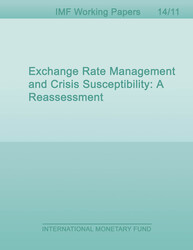
Exchange Rate Management and Crisis Susceptibility: A Reassessment
This paper revisits the bipolar prescription for exchange rate regime choice and asks two questions: are the poles of hard pegs and pure floats still safer than the middle? And where to draw the line between safe floats and risky intermediate regimes? Our findings, based on a sample of 50 EMEs over 1980-2011, show that macroeconomic and financial vulnerabilities are significantly greater under less flexible intermediate regimes—including hard pegs—as compared to floats. While not especially susceptible to banking or currency crises, hard pegs are significantly more prone to growth collapses, suggesting that the security of the hard end of the prescription is largely illusory. Intermediate regimes as a class are the most susceptible to crises, but "managed floats"—a subclass within such regimes—behave much more like pure floats, with significantly lower risks and fewer crises. "Managed floating," however, is a nebulous concept; a characterization of more crisis prone regimes suggests no simple dividing line between safe floats and risky intermediate regimes.
Publication date: January 2014
ISBN: 9781484383971
$20.00
Add to Cart by clicking price of the language and format you'd like to purchase
Available Languages and Formats
| English |
Prices in red indicate formats that are not yet available but are forthcoming.
Topics covered in this book
This title contains information about the following subjects.
Click on a subject if you would like to see other titles with the same subjects.
Economics- Macroeconomics , Economics / General , International - Economics , crisis , vulnerabilities , real exchange rate , flexible exchange rate , intermediate exchange rate , exchange rate flexibility , intermediate exchange rate regimes , flexible exchange rate regimes , nominal exchange rate , exchange rate overvaluation , real exchange rate ov
Summary
Copyright © 2010 - 2024
Powered by:
AIDC



